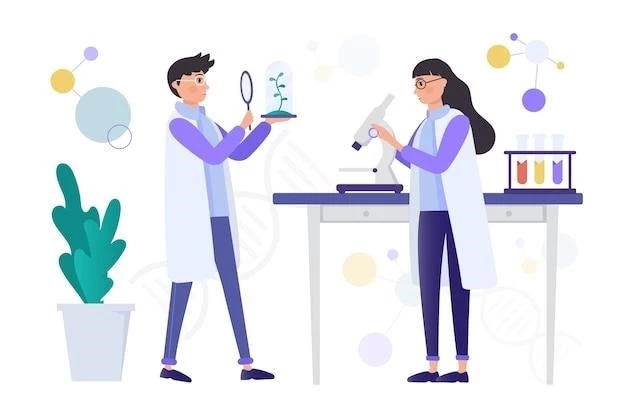Overview of Oligodactyly
Lethal occipital encephalocele-skeletal dysplasia syndrome is a rare genetic disorder characterized by oligodactyly and other skeletal anomalies․ Postaxial tetramelic oligodactyly affects limb development․ Explore more about this condition․
Definition and Characteristics
Oligodactyly is a rare congenital condition characterized by the presence of fewer than five fingers or toes․ It can be an isolated anomaly or associated with various syndromes․ Syndactyly and metacarpal abnormalities are common features seen in individuals with oligodactyly․ Understanding the genetic and developmental factors behind this condition is crucial for accurate diagnosis and management․
Types and Classification of Oligodactyly
Explore different types of oligodactyly such as postaxial tetramelic oligodactyly and syndromes like Weyers ulnar ray/oligodactyly syndrome․ Understand the classification and implications of these variations․
Postaxial Tetramelic Oligodactyly
Postaxial tetramelic oligodactyly is a rare congenital disorder affecting limb development, resulting in underdeveloped or absent fingers or toes on the outer side of the limbs․ This condition presents unique challenges and considerations in diagnosis and treatment․ Learn more about the characteristics and implications of postaxial tetramelic oligodactyly to enhance understanding and management strategies․
Weyers Ulnar Ray/Oligodactyly Syndrome
Weyers ulnar ray/oligodactyly syndrome is a rare genetic disorder characterized by a combination of limb abnormalities such as ectrodactyly, ulnar or radial ray deficit, cardiac issues, single central incisor, splenic abnormalities, and renal malformations․ The syndrome highlights the complexity of genetic conditions affecting limb and organ development, underscoring the importance of comprehensive medical evaluation and management․
Clinical Manifestations of Oligodactyly
Lethal occipital encephalocele-skeletal dysplasia syndrome is a rare genetic disorder characterized by occult occipital encephalocele and oligodactyly․ Explore more about the skeletal anomalies associated with this syndrome․
Associated Skeletal Anomalies
Oligodactyly often presents with other skeletal anomalies such as syndactyly, arachnodactyly, phalangeal aplasia, and limb length discrepancies․ Understanding the spectrum of associated skeletal issues is vital for comprehensive evaluation and personalized treatment approaches in individuals with oligodactyly․
Other Syndromes Linked to Oligodactyly
Oligodactyly is often associated with various syndromes such as Cornelia de Lange syndrome, Apert syndrome, and Poland syndrome․ Understanding the diverse range of syndromes linked to oligodactyly is essential for accurate diagnosis and management strategies tailored to each individual’s specific needs․

Diagnosis and Treatment of Oligodactyly
Lethal occipital encephalocele-skeletal dysplasia syndrome is a rare genetic disorder characterized by oligodactyly and other skeletal anomalies․ Postaxial tetramelic oligodactyly affects limb development․ Explore more about this condition․
Genetic Testing and Imaging
Genetic testing and advanced imaging techniques play a crucial role in diagnosing and understanding oligodactyly․ These tools help healthcare providers identify specific genetic mutations and visualize skeletal abnormalities associated with the condition, leading to more accurate diagnoses and personalized treatment plans․
Management Approaches
Effective management of oligodactyly involves a multidisciplinary approach including orthopedic surgeons, genetic counselors, and rehabilitation specialists․ Treatment options may include surgical interventions for functional improvement, prosthetics, and physical therapy to enhance mobility and quality of life for individuals with oligodactyly․ In-depth evaluation and personalized care plans are essential in addressing the unique needs of each patient․
Oligodactyly Research and Case Studies
Clinical resource with information about oligodactyly and its clinical features, available genetic tests, and case studies offering valuable insights into this rare congenital anomaly․ Stay informed about the latest advancements in oligodactyly research and real-life scenarios․
Case Reports and Studies
Explore case reports and studies highlighting unique presentations of oligodactyly in individuals․ These reports provide valuable insights into the clinical manifestations, management approaches, and outcomes associated with this congenital anomaly․ Stay informed about the latest research findings and real-life cases to enhance understanding of oligodactyly․
Evolutionary Perspective on Human Limb Development
Gain insights into the evolutionary aspects of human limb development, including the genetic and developmental mechanisms involved in conditions like oligodactyly․ Discover how these developmental processes have evolved over time and contributed to the diversity of limb anomalies seen in different populations․

Impact of Oligodactyly on Individuals and Society
Individuals with oligodactyly may face unique challenges in daily life due to limb differences․ Understanding the physical and emotional impact can lead to better societal support and inclusivity for individuals with oligodactyly․ Explore personal experiences and societal perspectives on living with this condition․
Personal Experiences and Challenges
Individuals with oligodactyly often face personal challenges related to limb differences, including emotional and physical obstacles․ Understanding and sharing personal experiences can help raise awareness, promote acceptance, and provide support for those living with oligodactyly․
Social Perception and Support Systems
The social perception of individuals with oligodactyly can impact their psychosocial well-being․ Creating supportive environments and building inclusive communities can aid in enhancing the quality of life for those with limb differences․ Understanding societal attitudes and promoting education can contribute to a more accepting and supportive society for individuals with oligodactyly․
